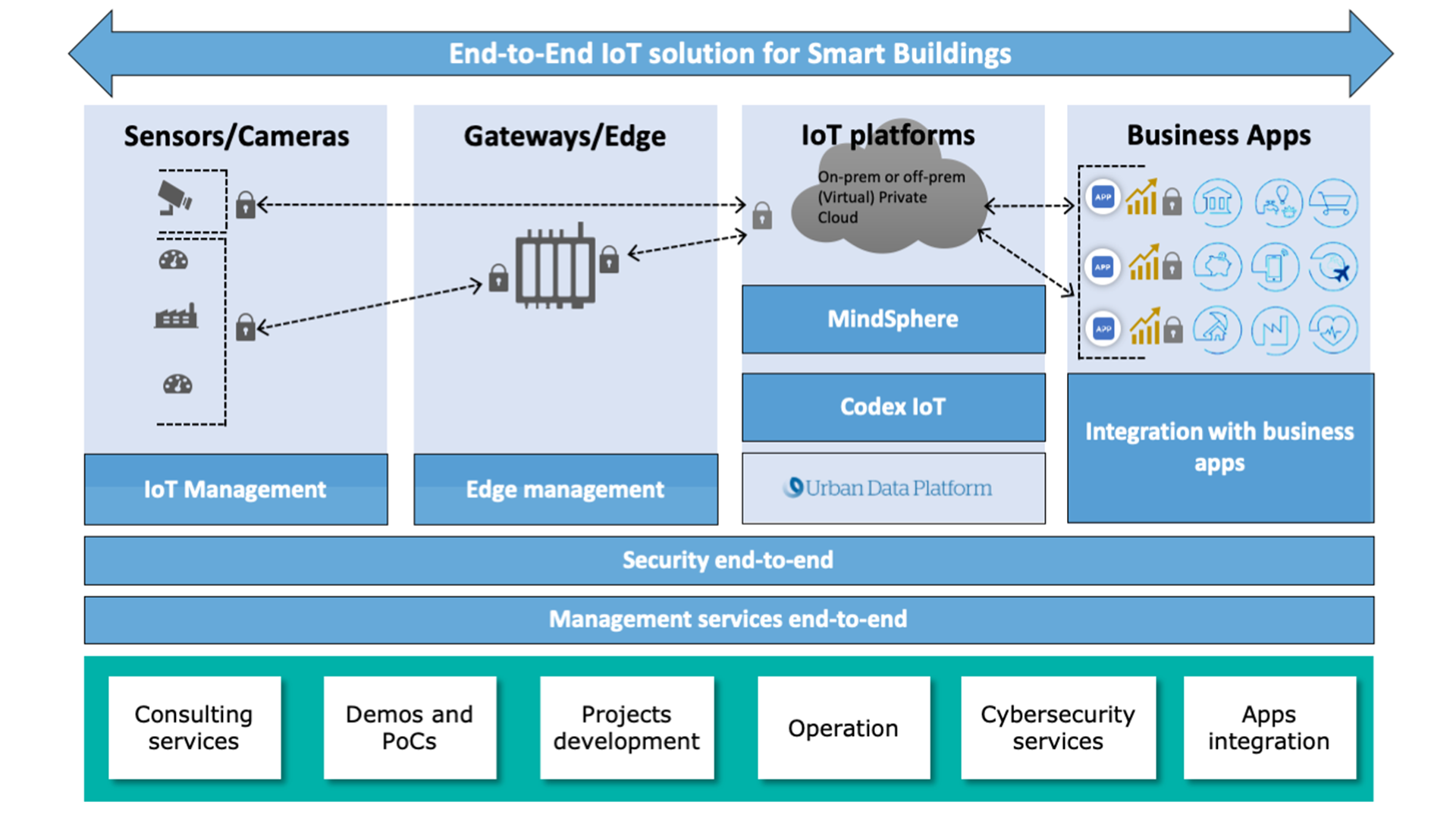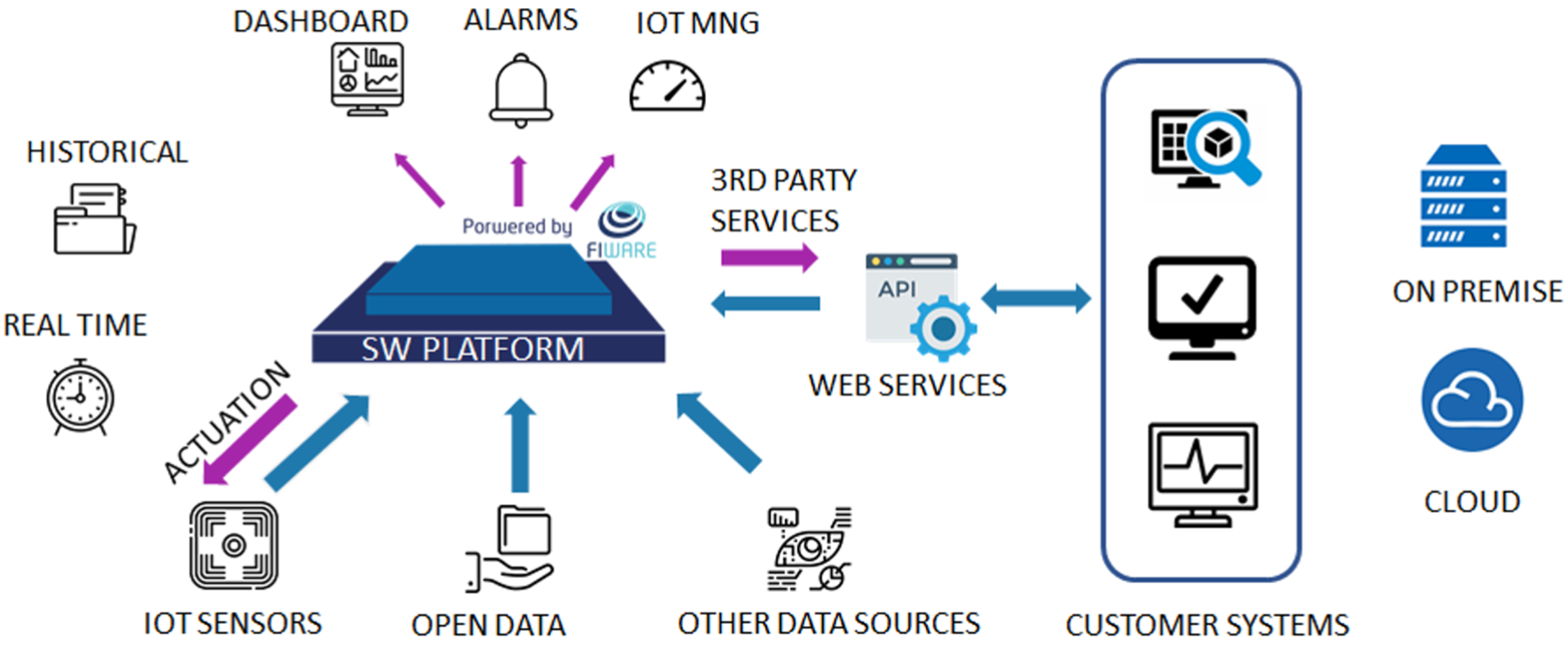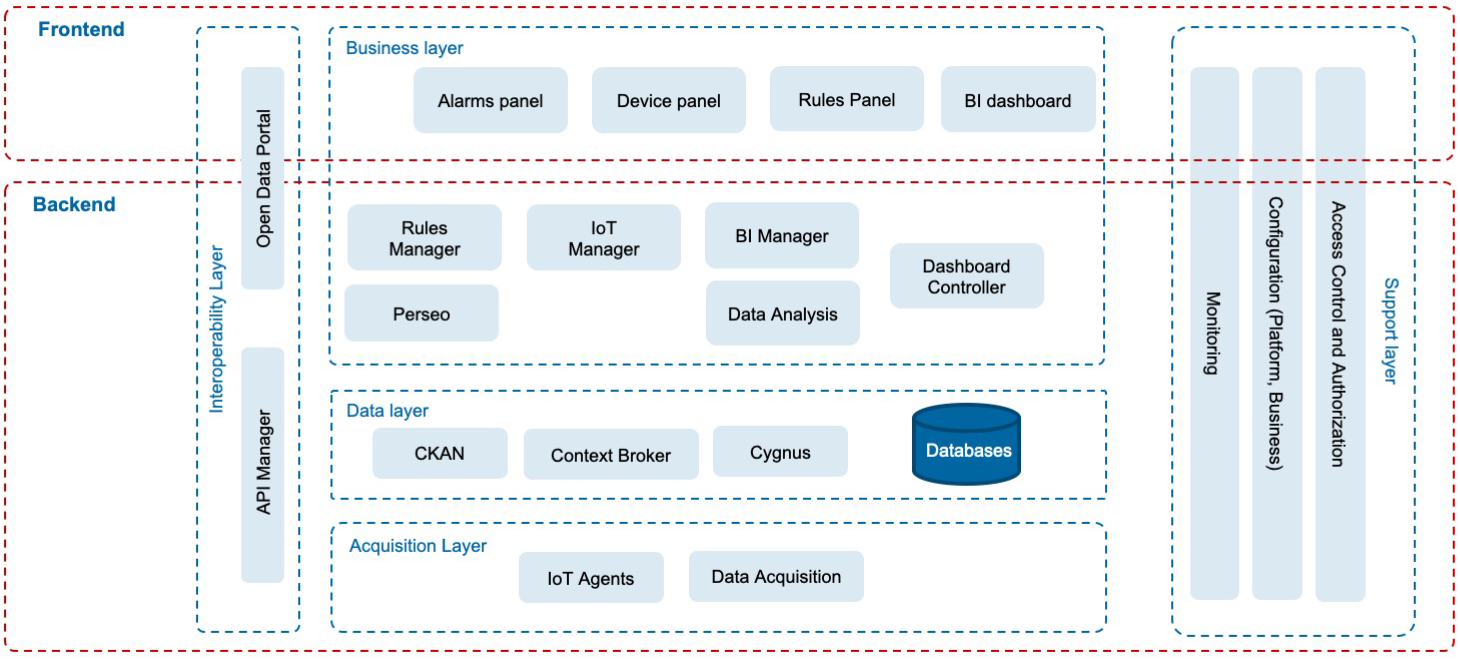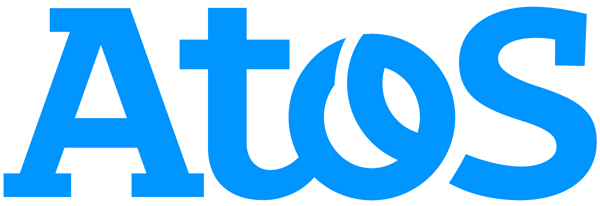Challenge & Context
Society is increasingly committed both to protecting the environment and to the development of sustainable economic models. For a number of years, this desire has extended to the design, build, and use of public and private buildings and spaces. They must be efficient, safe, and comfortable for the people, businesses and public sector organisations that use them.
The way in which we use buildings has been already changing but is now being growingly impacted by the COVID-19 pandemic as well. From now on, shops, offices, hotels, airports, train stations, restaurants, and factories and many other places will need mechanisms to control capacity and hygiene procedures, in order to minimize risks to public health.
In all these scenarios, technology has a central role. Aggregating building information from multiple systems into a single dashboard, for example, is of real interest to building managers. So too is their willingness to create safer spaces with regards to public health: monitoring access, providing and replenishing sanitizer dispensers, and tracking movement, will soon become routine for building service provision.
Building owners and managers must be able to collect, monitor and analyze building data in real-time in order to minimize energy consumption and running costs, but also to allocate maintenance resources efficiently, and to anticipate and prepare for change of use.
Until now, it has been difficult to build a complete and integrated picture needed to achieve these levels of building service management. Data flows are rarely real-time and system data is usually siloed.
Atos, a FIWARE Foundation Platinum Member and one of the contributors to FIWARE technology, has gained a strong reputation in the provision of smart building solutions, more specifically through the application of IoT technologies. These achievements have been widely recognized by industry analysts including Everest, NelsonHall, Forrester, IDC and Gartner, who rank Atos as a leader and major player in the IoT sector. Atos role/presence as consultants and IT service providers in specific vertical markets is significant also in other domains, as Smart Hospital different from smart factory is different from university campus.
Solution
Atos originally developed its Urban Data Platform (UDP) as part of its Smart City initiative. Today, the UDP can be deployed for both smart buildings and spaces. UDP is an open, standard and interoperable IoT platform. It is powered by FIWARE, which allows the collection of numerous data coming from multiple sources. These include sensors, open portals, legacy systems, and web services.
UDP normalizes the data to NGSI standard and provides the advanced analytics and visualization functions needed to support the decision-making process and the development of added value services. UDP can be readily adapted to any domain, including smart buildings and spaces. It is currently being used in numerous successful scenarios with significant results.
Figure 1 . Atos UDP Data Flow
The Atos solution follows an end-to-end approach and starts with the selection of the best use-cases with the customer and the definition of sensors and devices that will be required to gather data. The UDP platform, in which devices and other on-premise systems are integrated, is then specified. Once the specification is complete, the solution is ready for deployment across the client site.
Further client priorities have been included into the recent use cases:
- Increasing users’ experience by monitoring noise, temperature and hygiene/cleanliness;
- Optimizing maintenance service efficiency by monitoring device values;
- Forecasts for material provisioning by analyzing consumption data;
- Providing access and capacity control surveillance for specified areas;
- Detecting incidents and anomalous behavior patterns through CCTV and camera analysis.
These use cases require data capture and analysis from different types of devices. Atos builds the relevant partnerships with specialist providers of sensors, cameras, gateways and edge devices. When providers are engaged with UDP, data formats and protocols are mapped, ensuring that future integration of devices is relatively quick and easy.
Clients have responded positively to this end-to-end approach: it makes their lives simpler and gives them greater transparency and control to manage their buildings.
UDP offers more than simple device integration. It is also known for being able to integrate with clients’ existing business applications and third-party environments. UDP offers, for example, integration with MindSphere from Siemens, with Atos’ own Codex IoT solutions and with social media and public service data streams.
The platform configuration is readily catered for the conditions and needs of each client. Atos UDP leverages both on FIWARE’s generic enablers as well as on other open source components.
While the UDP platform is central to the proposition, the project approach is also appealing. Adopting and adapting use-cases makes it possible to rapidly pilot, test and tune scenarios. This, in turn, makes the transition to upscaling and mass roll-out smoother and better predictable.
Building from practical pilots also reduces risks and augments flexibility. The client will, for example, always be aware of latest modifications and tweaks.
With regard to the deployment process, Atos provides a complete program of ongoing maintenance, support, and development to ensure that the client keeps up with future innovation.
How it works
UDP is a flexible, modular and open IoT platform which allows the collection and integration of data from sensors and other sources. It normalizes and processes such data to provide the aggregated and informed views effective decision-making depends upon. UDP’s main functions are:
- Data collection from diverse sources: sensors, cameras, open data sources, mobile devices, social networks, batch files, media data, GIS data, etc.;
- Full IoT device management integrated onto a unified platform;
- Data normalization to the NGSI format, translating source formats and different protocols to the platform data models;
- Real-time data analysis to support timely and informed decision-making;
- Accurate prediction of future values, using historical data and machine learning;
- Advanced data visualization using maps, graphics, alarms, etc.;
- Triggering actions according to predefined rules and analyzed data;
- Secure access control to devices, data and services, minimizing cyber-security threats.
Figure 2 . Atos UDP Data Sources and Core Functions
The UDP platform follows a micro-service architecture. All modules are containers that communicate securely via API. Components are organized according to a layered schema. Technologies and protocols are as follows:
- Back-end — Python;
- Front-end — Node.js.;
- Access management security — KeyCloak;
- API management security — Kong;
- Storage — MongoBD, PostgresQL and ElasticSearch;
- Real-time data feeds — FIWARE Context Broker and Cygnus;
- IoT data collection and NGSI translation — various IoT Agents and Data
- Acquisition module using Apache NIFI.
Figure 3 . Atos UDP Architecture
It’s the IoT Manager who manages all devices connected to the platform via the device panel in the user interface.
Rules are defined using the Rules Panel. These trigger events as predefined conditions. The Rule Manager manages the conditions and events. The front-end dashboard visualizes both historical data and real-time alarms. It also configures all rules, devices, user and administration functions.
Benefits & Impact
There are five strong commercial arguments for users of Atos’s UDP platform, which is based on FIWARE:
- Allowing companies to lead by working with practical use-cases: an approach increasingly demanded by clients;
- Proposition is underpinned by strong baseline technology: solutions are robust and reliable;
- Solution is easy to integrate with external systems such as ERP or issue management systems thanks to its APIs. It can be deployed either via cloud or on-premise software;
- UDP is easily customizable to cater for individual client preferences and requirements;
- As an open source solution, license costs are very limited: clients gain strong cost-benefit advantages and agility, while avoiding vendor lock-in.
Furthermore:
Support for FIWARE open source components is ensured by FIWARE Foundation, whereas Atos provides full support for the UDP platform while keeping up with the speed of innovation.
Its modular platform architecture, future extensions, adaptation to new scenarios, and the addition of new functionality is straightforward.
The platform is also massively scalable and can accommodate major increases in sensor volumes, data and services. Thanks to its use of microservices, it is also open to ad hoc deployments in the event of unforeseen developments.
Additionally, a high commercial impact comes also from its quick and early-stage payback as clients are adapting to the “new normal” created by the COVID 19 pandemic: numerous conversations and pilots are already in progress as organizations seek to set up safe spaces for employees and customers.
As a reference example, Atos has recently piloted the UDP in a Smart Building environment in several Spanish airports managed by AENA (Spanish airport and air navigation authority) to assess the benefits of having a real-time monitoring of some areas of the airport through a network of LoRa sensors connected to the platform and providing different views over the collected data. Some alarms and rules are triggering also actions to optimize the airport services and users’ satisfaction.
Added value through FIWARE
Atos is a Platinum Member of FIWARE Foundation and holds a seat in FIWARE’s Board of Directors. Moreover, Atos has a representative in FIWARE’s Technical Steering Committee and is also an active member of the FIWARE Open Source community.
Atos has already leveraged FIWARE in market initiatives including Smart Cities, AgriFood, and Smart Energy and Smart Industry In these sectors, Atos provides full-stack solutions built around its FIWARE-based platform.
The flexibility, modularity, competitive pricing and high interoperability elements provided by Atos’s UDP is highly valued by customers. Customers also appreciate the freedom from vendor lock-in scenarios, provided by FIWARE-based solutions. The FIWARE code repository inspires client trust in long-term maintenance and development.
For the Atos UDP proposition, FIWARE ensures that real-time data from multiple sources can be managed safely and efficiently.
The choice of platform also offers a high degree of future-proofing, and this is important when one considers the speed and range of change in smart buildings and spaces. Sensors are developed to monitor anything and everything, from the ambient temperature of buildings to the temperatures of the people who use them. Cameras continually scan the spaces in use, not only to register people’ presence but also to identify patterns and changes in behavior. All of this is continually open to further integration with varied third-party data sources, ranging from social media feeds to health, seismology, and meteorological data.
With the “powered by FIWARE” Atos’ solution, clients have a platform ready for continual and often new developments.
Next Steps
Atos will be providing a continually growing catalogue of connectors, minimizing the time needed to integrate new devices. By increasing the number of pilots and projects, a wide-range of protocols and data formats will be incorporated, making plug-and-play the norm, and reducing both time-to-market and cost.
In parallel, in its role as a provider of advanced AI and analytics services, Atos will be bringing value to the growing data lakes associated with smart building and space control. Always in compliance with data regulation, Atos seeks to turn growing intelligence to the good of business and society.
Atos continues its active participation in FIWARE Foundation’s strategic direction, ensuring its smart building and space solutions can benefit from continual innovation and expansion. Some of the current cutting-edge technologies Atos is working with include edge computing, blockchain, and robotics.




